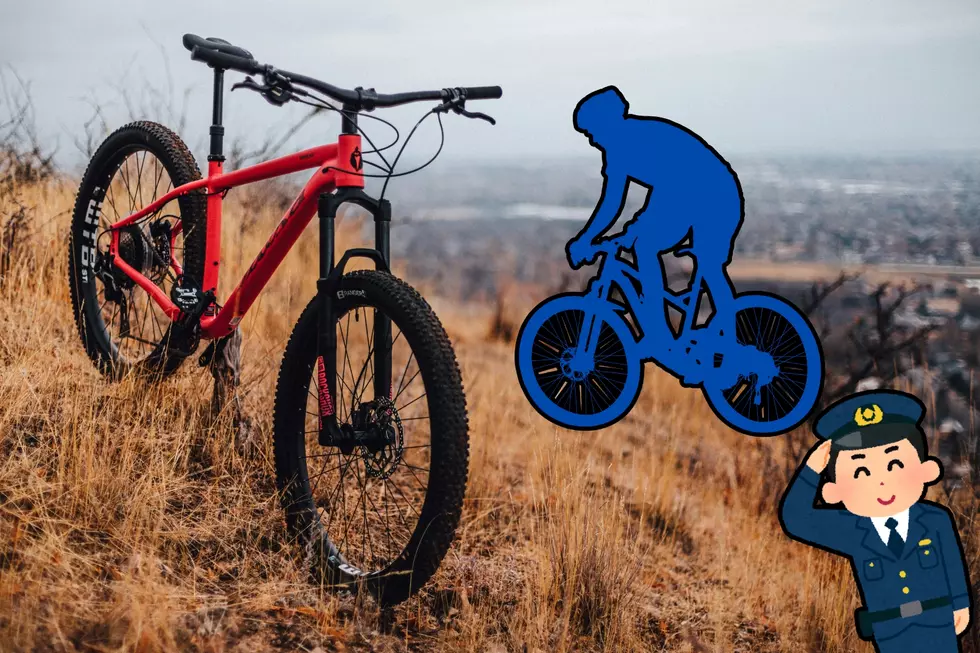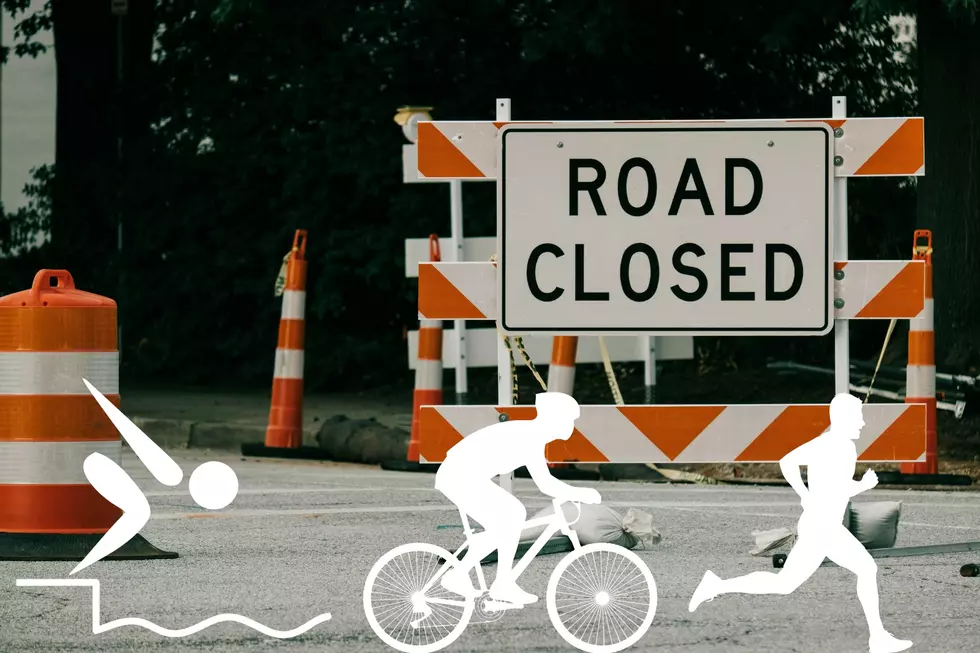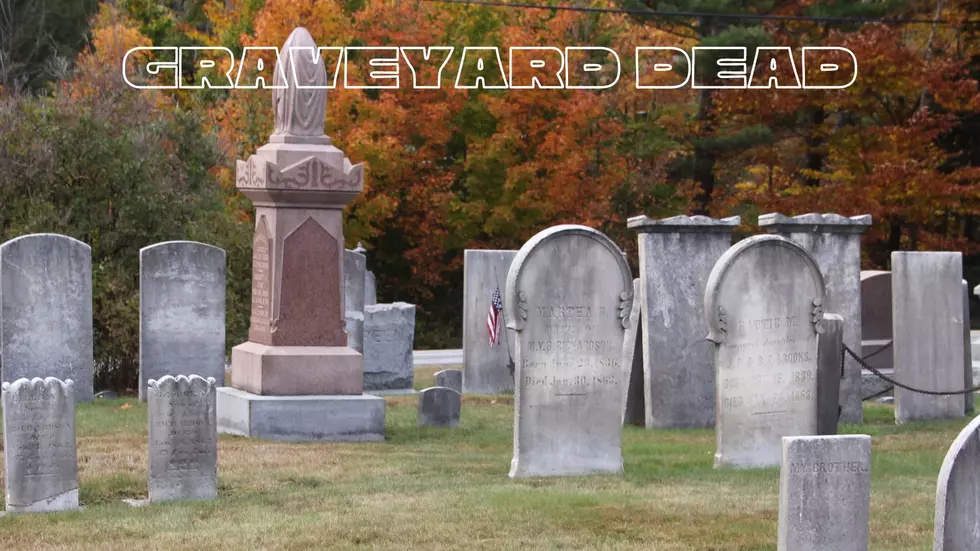Marianne Hamilton, Miss Senior Universe, loves to work out. Especially in the pool.
The admitted late bloomer, who shunned fitness and working out in her younger years, has earned nearly 50 gold medals in Senior Games throughout the country since embracing physical fitness.
Hamilton, the senior fitness expert on the Andy Griffin Show, recently compiled a list of things those of us in our more advanced years can do on a daily basis to help fight off depression and loneliness.
"A lot of people later in life are alone. Maybe they've lost a spouse or for whatever reason, have to face the world by themselves. Exercise can do so much for those people beyond the obvious of making their bodies healthy. It can really help them fight depression and loneliness. It's a combination of wonderful hormones and then, of course, the whole mental aspect of feeling better about yourself."
Here's Marianne's list:
1. Start slowly -- If you haven't been exercising or physically fit in the past, you don't want to jump in and try and run 10 miles right away. You just want to start slowly and listen to your body. Don't overdo it right at the start. Walk or run, just get to it. It will lift your mood.
2. Yoga is a good option -- It's all about being more flexible. There are a lot of people who say they can't do yoga, that it's too hard. It doesn't have to be. Like with any exercise, do what you can do. No one expects you to do the really hard poses right from the start. Just concentrate on trying your best and improving a little at a time.
3. Get dirty -- Believe it or not, touching soil can boost a brain chemical called serotonin. That's the chemical that helps us sleep, helps us stay calm. Contact with soil and a specific soil bacteria, microbacterium vacci, can trigger the release of serotonin in your brain. I think there's a reason why a lot of gardners are really happy people.
4. Tennis or pickleball -- You can play by yourself by hitting a ball against a wall, but these are so much more fun when you have a partner or even doubles partners. You don't have to join an expensive club. There are so many options for free. And the social aspect of these sports is a huge bonus as well.
5. Exercise at work -- Once an hour, take a few minutes and step away from your desk if you can. Try and find a quiet place and do some stretching if you can. Go up and down those flights of stairs. Just moving can really help to boost your mood.
6. Swimming -- It's a great full body workout and a lot of people find that water really calms them, which is a great thing if you're dealing with depression. Your body is so much lighter in the water and it kind of feels like you're doing something fun, not just exercising.
7. Biking -- Using the many, many bike paths in our area will give you a chance to see the incredible beauty of where we live and also give you a chance to get a workout in. And you don't really need anything special to do it. In fact, the Bicycle Collective here in town will let you come in and work off the price of a bicycle. You go put in five or six hours and you can ride out with a new bike. But please don't forget to wear a helmet.
8. Strength training -- You can use weights or machines or just your own body resistance on the wall. As we get older, strength training becomes more and more important.
9. Walking your dog -- Studies have shown that dog owners on average get 70 percent more exercise than non-dog owners. The animal needs to be walked to do his business. And Fido can help you reduce your stress. There's nothing like the unconditional love of a dog.
10. Dancing -- Pole dancing (at home) can be an incredible form of exercise. It requires tremendous upper-body strength. Any dancing is great. When nobody's watching, turn on your favorite music when you're home by yourself, you can dance. Let your body move. Pretty soon you'll feel empowered and you'll feel better about yourself.
11. Sprinting -- Incorporate three 20 second sprints, separated by maybe a two-minute break, that's as good as 50 minutes of moderate exercise. You might have to work up to that, but I always incorprate three 20-second sorints when I'm teaching classes. The benefits are amazing.
12. Basketball -- You jog, sprint, jump throw -- basketball incorporates all sorts of different activities. You can do it indoors or outdoors. and there are lots of places here in town to play. And the social aspect is huge. You'll make so many new friends.
13. Softball -- If you're going to really be into the game, you need focus -- focus on what's happening and diverting your mind from negative thoughts. That focus gets you out of that depression and also adds to that connection with other people, being a part of a team. And that also gives you accountability.

St. George Area Experiencing Surge In Vehicle Burglaries: How To Stay Safe
There's been a rash of vehicle burglaries -- some from unlocked cars, some not -- in the St. George area in the past few days.
"Don't be an easy target," said St. George Police Department public information officer Tiffany Mitchell. "Basically, most criminals are lazy and are looking for an easy score. Lock your doors, and don't leave things out in the open where thieves can see them."
Those are the two biggest victim mistakes.
Many people stash their stuff under a seat or in the middle console or glove box, but then don't complete the safety practice by locking their doors.
This makes it super easy for even a casual thief to just open the door and grab something and then take off.
But even if you do make it a practice of locking your doors, if you leave something of great value out in the open where criminals can see them, they will not hesitate to smash a window and abscond with the item.
Mitchell admonishes all of us to stow items of value (wallet or purse, iPad, smartphone, jewelry, etc.) out of plain sight.
"Or better yet, just take the items with you," Mitchell said.
SGPD also said a lot of thefts are taking place at trailheads (St. George has dozens of them), where the thief knows the car owner will be gone for some time.
Although many of the thieves are from out of the area, Mitchell said there are a few homegrown criminals, especially where it is a crime of opportunity, like an unlocked car.
HOW TO AVOID CAR BURGLARIES:
- Keep all car doors and windows closed and locked – about 30% of vehicle burglaries are from vehicles where the doors were not locked or a window was down.
- Do not leave valuables or packages in plain sight in your vehicle.
- If your vehicle has a built in security system, use it. If you don’t have a security system installed, it may be worth the investment.
- Park your vehicle in an area that is visible to the public and well-lit at night.
- Never leave an electronic garage opener in the car. It can provide a thief easy access to your home.
- Headed to the beach or to go hiking? Burglars are, too. When you pack the car, bring as few items as possible with you - leave jewelry, watches, laptops, etc at home..
- Keep a list of serial numbers (include make and model information, as well) for the commonly used electronic equipment you may keep in the car, like stereo faceplates, etc.
- If your car is burglarized, report it to the police department immediately.
For more safety tips, go to the St. George Police Department web page.

Handcuffs? Nope. Guns? Nope. Stuffed Animals? That's The Ticket
Did you know policemen and other First Responders carry more than weapons and restraining devices to help in times of emergency?
Sometimes they carry Winnie the Pooh.
"Most of us officers are parents," said police lieutenant TJ Low. "We understand that kids are sometimes traumatized by seeing an officer in uniform. It's something as little as a teddy bear or a police sticker that goes a long way with these kids. That's what we want to pass along to them: we're there for them. We're not there to hurt them. We're not going to take their parents away. We're just there doing our job, and we want the kids to have somebody they can look up to."
Studies have shown that when police respond to family disturbance, they are often viewed as the "bad guy" by young children, who believe the police are there to take away their parents.
This is a belief that often is taught in the home of many parents who skirt the law, especially when drugs are involved.
An officer ofttimes will give a child a stuffed animal to 'break the ice,' or when the child is afraid during what could be a traumatic family event.
"That kind of helps give them some security, and kind of helps them when they're in a time of trouble and things aren't going well at home," patrol officer Jimmy Knox told David Chasanov of Fox25 TV. "It's kind of a bright light in their lives during a dark moment."
A pair of teens in California learned about this heart-warming program and began a drive to make sure every police officer in their area had plenty of stuffed animals to go around.
Michael and Elizabeth Christensen, siblings in Carlsbad, Calif., in a story highlighted by the Church News, saw the need and the great cause and put together a program to fill the need.
"The Christensens invited local schools, law enforcement, first responders and businesses to take part. Over several weeks, they organized donation drives at five locations. “When we first started reaching out to organizations, people said ‘no’ until we started showing up in person,” Michael said. “We spend most days running around, meeting with people after school, creating partnerships with local schools and businesses throughout Carlsbad and Encinitas.”
If you want to help or perhaps start a program in Utah, the St. George Police Department and the Washington County Sheriff's Department said they'd be glad to take donations on behalf of the children.
Here are links to contribute: St. George Police Department, Washington County Sheriff's Office, Washington City Police Department, Hurricane Police Department, Santa Clara/Ivins Police Department.

Dedication And Enthusiasm: St. George's Police Dogs Turn Work Into Play
You probably work pretty hard.
Modern society dictates that we put in 40, 50 or even 60 hours a week in our jobs if we're to be considered a valuable employee. Being the first one in the office and the last one out is often revered in the workplace (whether that's right or wrong is a debate for another time).
But if you love your job so much that it's like just going out to play, then being at work long hours is no big deal.
That's why Enzo, Karly and Emma don't mind at all putting in a long week. To the trio of St. George police officers, work is play.
I'm sure by now you know I'm talking about the three police dogs employed by the City of St. George.
And when it's time to go to work, those three can't wait.
"They don't know that it's work, they think it's time to play," said K9 Division Director Joe Watson. "You've got to understand that these are high motor, high energy dogs and they are excited to get out there and do what they've been trained."
Watson joined me on The Andy Griffin Show to talk about the 10 dogs working for our safety throughout Washington County, and in particular the three canines that work for St. George City.
"They work hard and they don't even know it," Watson said. "To them it is just fun."
I wish we all could love our jobs that much.
With each dog there is a mandatory four hours a week of training in each discipline they specialize in. Most dogs have at least two areas they specialize in (narcotic detection, explosive detection, criminal apprehension, etc.), which equates to at least eight hours of training each week to remain certified.
Watson, who used to be a K9 handler officer himself, now supervises the program. He is a big believer in the value of the K9 program.
"It's the only use of force a police officer has that can be recalled," he said. "You can't recall a taser or a bullet, but you can recall a K9."
Watson also was adamant about the most crucial role of a police dog.
"They save lives, of civilians and of police officers," he said. "If I can send my K9 into harms way to help save a human's life, I will be sad, but I will not hesitate to do it."

Stay Sharp And Age Well: The Benefits Of Engaging In Intellectual Activities
No less than three major studies have produced overwhelming evidence that stimulating the brain -- doing brain exercises -- helps us fight off potential dementia and Alzheimer's Disease.
From Alzheimers.org: "People who regularly do intellectual activities throughout life have stronger thinking abilities. This may give them a reserve of thinking skills, which may protect them against losses that can occur through ageing and disease."
The website theconversation.com puts it like this: "New studies show that increased participation in social, mental and physical activities is linked to a slower rate of cognitive decline in older adults. This research shows a “dose-response” relationship, where the more activities we do, the slower the rate of decline becomes."
Activities like: puzzles, games and quizzes, reading or even adding up your shopping bill in your head as you go around the supermarket.
From dementia.org: "Exercising the brain is an important, enjoyable part of everyday life for everyone. It has a part to play in a positive, healthy lifestyle in the same way as physical exercise. Stimulating leisure and social activities are also thought to be important in maintaining a healthy brain."
Locally, Utah Tech in St. George has an exciting program that many may not know about, although it's been around for a very long time.
The Institute For Continued Learning, specifically geared toward seniors and those who want to stimulate their brains near or after retirement, offers dozens of classes for a nominal fee ($55 per semester and you can take as many classes as you want).
The classes are taught by industry professionals in the subject area, most of them retired as well,
You can click on this link to see the list of classes, but a small sampling includes Art History, Journaling Techniques, Constellations (astronomy), Creative Writing, Evolution of Radio, Photography, History of Utah, Italian Cooking, Mark Twain, Bellydancing, Philosophy, Shakespeare, Tennis, and Traveling the World with KDXU contributor Gary Sorensen -- as well as dozens more.
Most of the classes take place during the day, perfect for the retired set, although some classes are at night.
It's the perfect place to stimulate the brain.

Overcoming Vaccine Hesitancy In Utah: Expert Advice For Parents
Southwest Utah Public Health Officer Dr. David Blodgett is not one to mince words, especially when it comes to vaccines.
"They saved the world, all but eliminated some deadly diseases and increased life expectancy all over the modern world," he said recently on the Andy Griffin Show.
That's why Blodgett and other health professionals are extremely frustrated in the recent trend to not get children vaccinated.
As many as 40 percent of children are not getting immunized in recent times in the United States for basic childhood diseases -- pertussis, chicken pox, polio, tetanus, diphtheria, hepatitis, measles, mumps, rubella and many others.
Why not? Well, that's complicated.
There's the usual group of anti-vaxxers, who have erroneously blamed immunizations for autism, compromised immune systems and toxins in the blood system. But that group makes up less than five percent of the total.
The reason the other 35 percent of parents haven't immunized their kids range from paranoia, apathy or a mistrust of vaccines after the low success numbers from the Covid-19 vaccines.
From the website childrensdefense.org:
"There are now hundreds of anti-vaccine websites, each amplified by social media, causing some to call the spread of extreme views a “cultural epidemic.” The cumulative effect of the controversy and confusion generated can make it difficult for parents to understand the facts and to make well-informed decisions for their children."
In other words, anti-vaxxers are stripping away the facts and using emotion to gain followers.
When I was young, measles, mumps, chicken pox and even polio to a lesser degree were still quite common.
These seemed like relatively harmless diseases at the time, but looking back at the statistics can bring a sobering reality.
- Before 1963, when the measles vaccine became widely available, about 6,000 people (mostly children) died every year from the disease. In 1978, measles was declared eradicated from the United States. Not one vaccinated person died from measles that year.
- Diphtheria killed 15,000-20,000 people a year in the United States before the vaccine. Since 2004, there have been no cases of diphtheria in the USA among vaccinated people.
- Mumps was deadly before 1968, with the mortality rate of those infected averaging about 2-4 deaths per 10,000 people (so 20 to 40 deaths in a city the size of St. George). Since the modern vaccine, in 2017, there were 5,629 cases of mumps in the US, down from 186,000 pre-vaccine.
- Chicken pox was extremely common 30 years ago and killed an average of 150 people a year. Now, about 30 people a year die from chicken pox.
- Today, less than 10 people in the United States are reported to have rubella and it is usually associated with travel and not being vaccinated. During the last major rubella epidemic in the United States from 1964 to 1965, an estimated 12.5 million people got rubella, 11,000 pregnant women lost their babies and 2,100 newborns died of the disease.
- Tetanus is uncommon in the United States, with an average of 30 reported cases each year. In 1950 (pre-vaccine), tetanus killed nearly 600 Americans.
- Polio vaccine was licensed in the United States in 1955. During 1951-1954, an average of 16,316 paralytic polio cases and 6,600 deaths from polio were reported each year. Since 1988, more than 18 million people can walk today who would otherwise have been paralyzed, and 1.5 million childhood deaths have been averted thanks to the polio vaccine.
To put it succinctly: "The facts are simple: Vaccines are safe. They are highly effective. They are supported by every major American medical society and government agency and are a routine part of pediatric care." --- Children's Defense Fund.

More From KDXU 890 & 92.5










